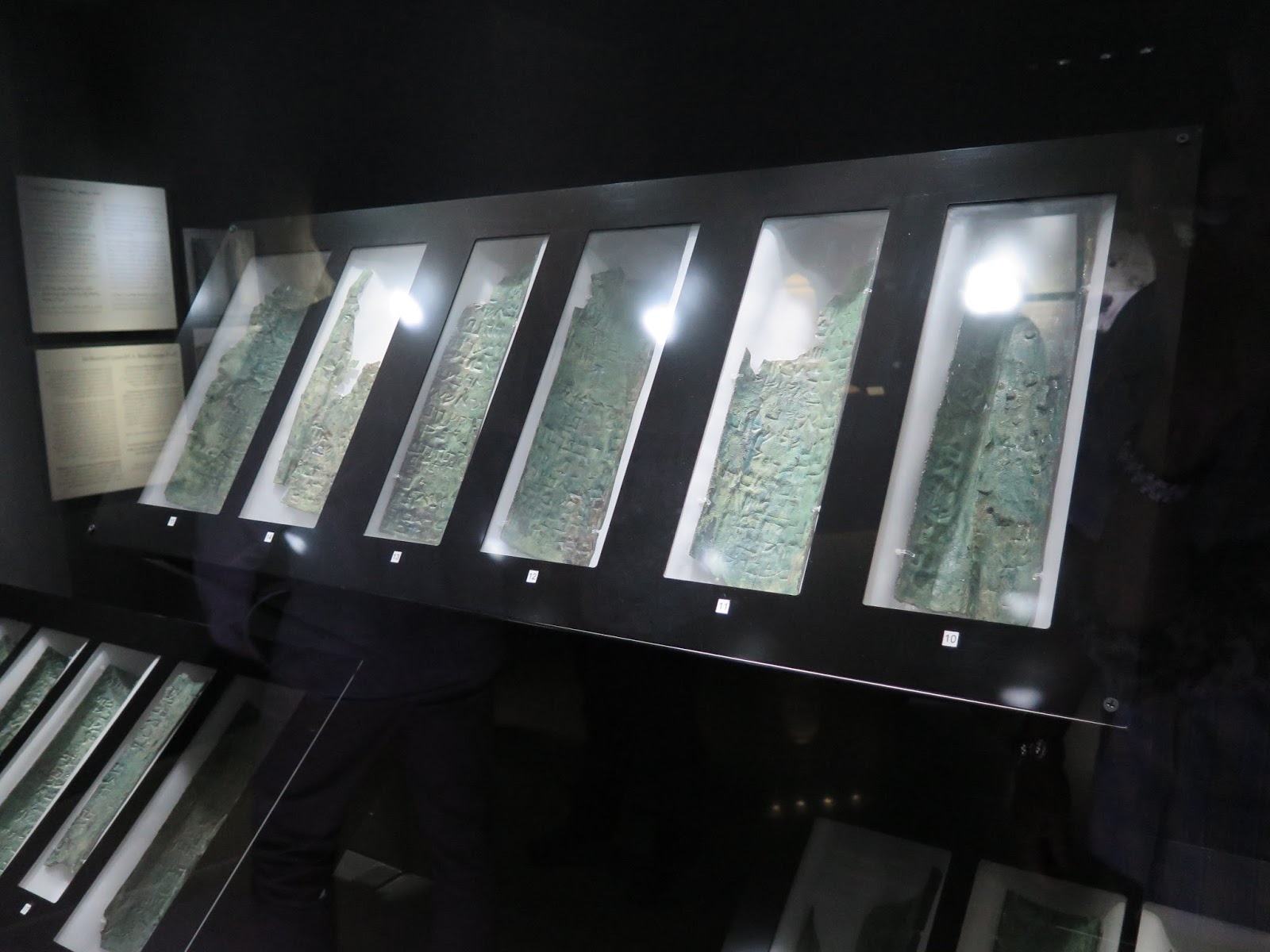Garth and Kathleen Holyoak will serve at BYU's Jerusalem Center from January, 2016, to August, 2017.
Thursday, October 13, 2016
JORDAN: The Jordan Museum
The Jordan museum is the largest museum in Jordan, displaying over 2,000 artifacts from the Stone Age to Modern Times. It presents the history and cultural heritage of Jordan and is located in the downtown area of Ras Al Ayn.
When we walked in, we were excited to see a replica of the Treasury at Petra which we had visited two days prior.
Photo: This is the Head of the fertility Goddess, Atarghatis.
Because we knew that some of the Dead Sea Scrolls were in this museum (dating from the 3rd century BC to the 1st century AD), we went to see them first.
The scrolls were first discovered by a Palestinian shepherd while he was grazing his animals in 1947, a year before the Arab-Israeli war erupted.
The shepherd sold seven of the scrolls to antiquities dealers and according to the museum, others were smuggled into the United States and sold.
The shepherd kept the remaining scrolls’ hiding place secret but two years later, a Jordanian army officer found them in their broken jars. He told archeologists at the Palestine Archeological Museum about his discovery which led to excavations and the discovery of scrolls in 11 caves.
Rare copper sheet inscriptions identify locations where hidden gold and silver treasures are supposedly buried.
Photo: Large clay pots which contained some of the scrolls.
Photo: Most of the scrolls were written on papyrus or parchment.
Highlights of the museum include a collection of plaster statues dating back to 7500 BC. They were discovered during a joint American-Jordanian expedition at the prehistoric site in the 1980s. The site was once a village where farmers, hunters and herders lived between 7200 BC and 5000 BC.
Photo: These are the remains of an infant
buried inside a pottery jar which was found under the floor of the parent's house.
Photo: Clay coffin.
Photo: Translation of stone where Garth was standing.
Photo: Temple
Photo: Artifacts from the facade of the temple.
Camels were used to carry large pots of water.
Photo: A beautiful display of Roman glass vessels.
Photo: The eagle is often used on Coat of Arms and is a symbol of immortality and power.
Photo: Apollo, was the God of music, light and truth and was found in a temple to the Goddess, Kore, of the underworld and vegetation. The back of the statue is not polished and therefore assumed it was displayed in a niche in the temple.
We left the museum and were headed to our bus when we saw these tombs. They were single chamber tombs that date from the early Neolithic period (4,000 to 3000 BC).
Our trip wouldn't have been nearly as meaningful without our wonderful guide, Moses, a Jordanian Christian. He made our trip so enjoyable as he shared stories about his life and his knowledge of the Bible.
Photo: Moses.
Although I haven't covered everything we saw in Jordan, the last 4 entries give you an overall view of our trip. It was cram-packed every day and after 4 days we were exhausted and ready to return to our "home" in Israel.
Subscribe to:
Post Comments (Atom)





































Was this the museum in the Citadel in Amman? It seems somewhat familiar.
ReplyDeleteI loved seeing the dead sea scrolls and where they were found. So incredible. So fascinating and leaves you with a feeling of awe!!!!! Beautiful pictures!
ReplyDelete